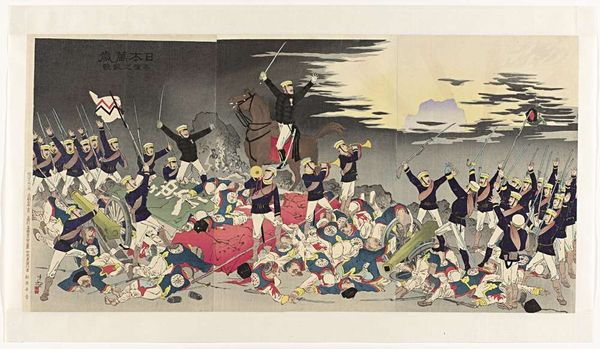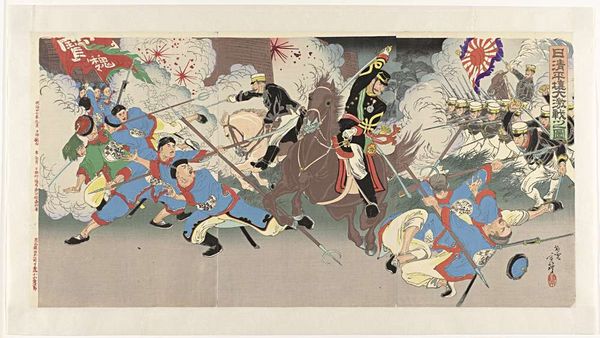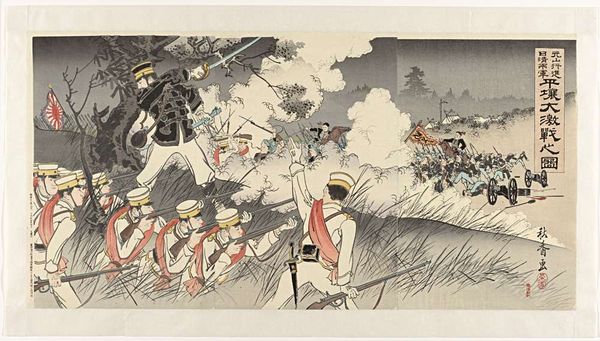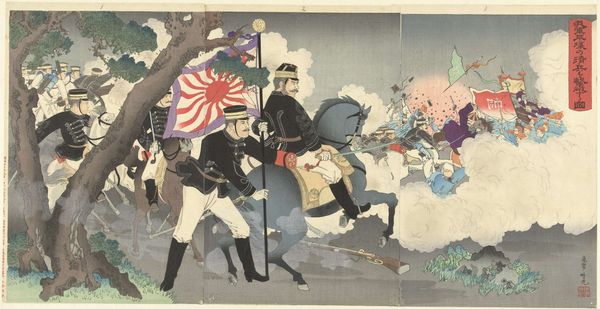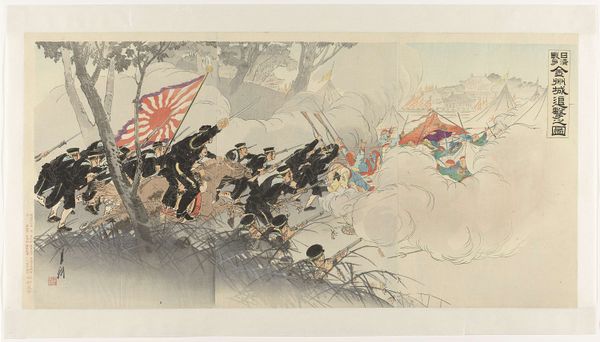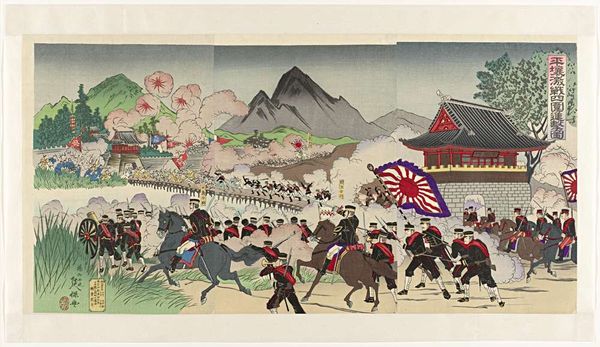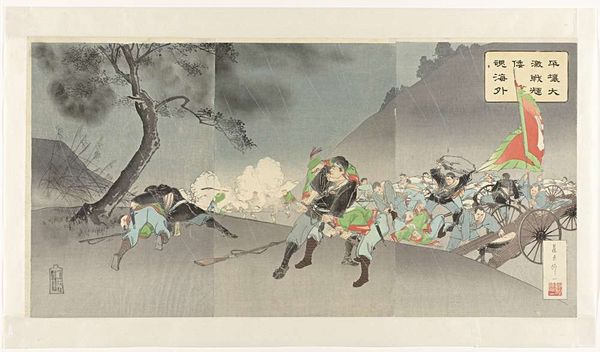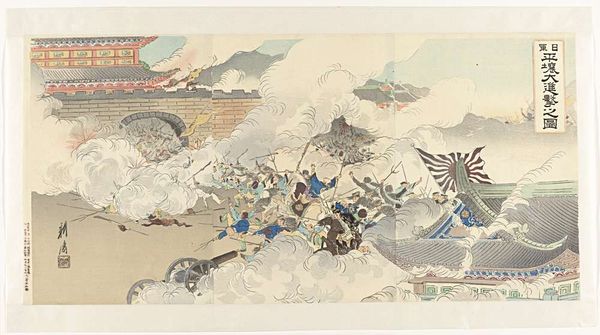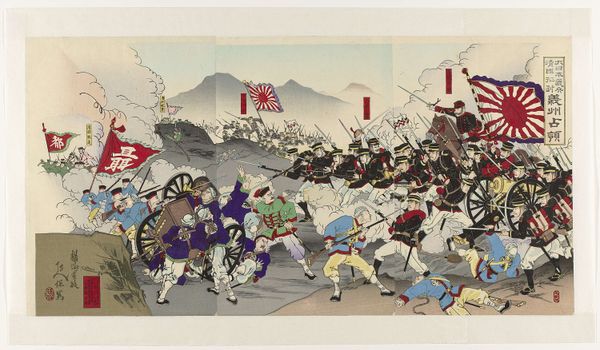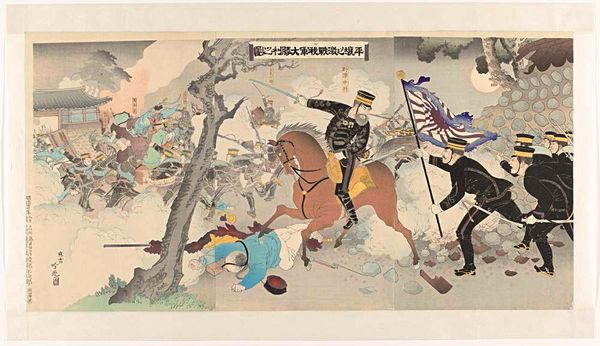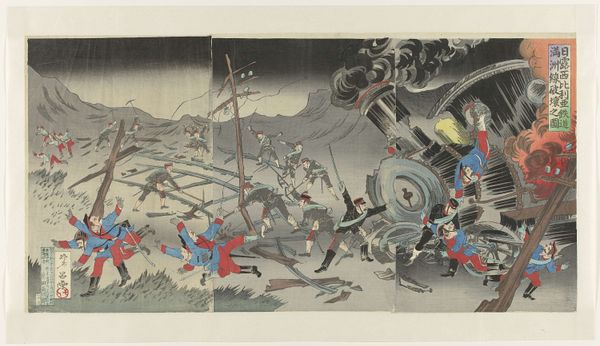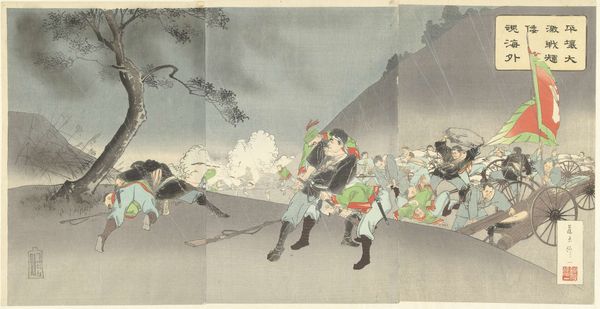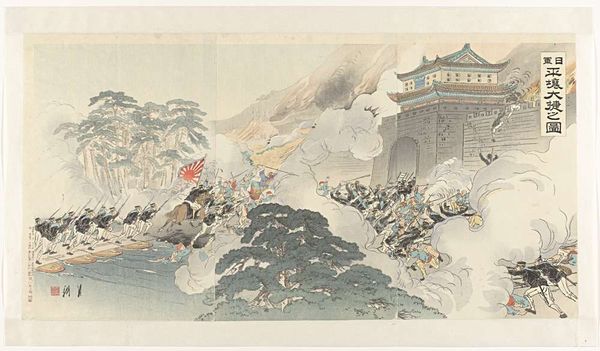
Aanval op Pyongyang: ons leger neemt de vijandelijke nederzetting over 1894
0:00
0:00
mizunotoshikata
Rijksmuseum
Dimensions: height 370 mm, width 729 mm
Copyright: Rijks Museum: Open Domain
Editor: This compelling print, "Aanval op Pyongyang: ons leger neemt de vijandelijke nederzetting over" by Mizuno Toshikata, dated 1894, plunges us directly into a scene of intense combat. I'm immediately struck by the stark contrast between the chaotic flurry of soldiers on the left and the more ordered ranks on the right, leading me to wonder about its representation of power and control during times of war. How do you interpret this work? Curator: This work needs to be situated within the context of the First Sino-Japanese War, which saw Japan asserting itself as a modern military power on the Asian continent. Toshikata’s print isn't just a depiction of battle, it’s a carefully constructed piece of propaganda designed to glorify the Japanese military and demonize the enemy. Notice the figures you mentioned? The "chaotic flurry" depicts the supposed barbarity of the Chinese soldiers versus the disciplined, almost robotic efficiency of the Japanese troops. This contrast serves a very specific purpose: to legitimize Japan’s imperial ambitions by framing them as a civilizing mission. Do you notice the symbolism employed? Editor: The flag, of course, is a powerful symbol, and also the weaponry displayed. But how does this narrative affect our contemporary understanding? Curator: Precisely. And it’s crucial to examine how these visual strategies reflect and reinforce broader social hierarchies and power dynamics. This image participated in the construction of a national identity rooted in militarism and colonial expansion. Recognizing these underlying agendas allows us to critically assess the legacy of imperialism and its impact on contemporary geopolitics. Considering this image through the lens of postcolonial theory is essential; it’s about dissecting the ways in which cultural representations perpetuate or challenge dominant ideologies. Editor: This gives me a lot to reflect on; it's eye-opening to understand the cultural weight embedded in such historical depictions. Curator: Indeed. Hopefully, this has encouraged us to question not just what we see, but why it was created and what socio-political messages were being conveyed.
Comments
No comments
Be the first to comment and join the conversation on the ultimate creative platform.
